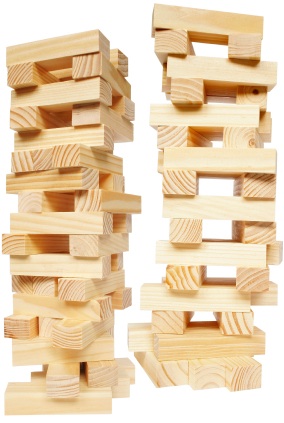A magazine where the digital world meets the real world.
On the web
- Home
- Browse by date
- Browse by topic
- Enter the maze
- Follow our blog
- Follow us on Twitter
- Resources for teachers
- Subscribe
In print
What is cs4fn?
- About us
- Contact us
- Partners
- Privacy and cookies
- Copyright and contributions
- Links to other fun sites
- Complete our questionnaire, give us feedback
Search:
How nature works like Google

When any species goes extinct it’s a tragedy, but in any extinction there lurks an even worse potential. Many other species could depend on it for food, and so the extinction of one important species raises the possibility of extinction for others. Ecologists who study the relationships between species try to figure out how important each species is to the others around it. Recently a pair of biologists, Stefano Allesina and Mercedes Pascual worked out a new way to predict the consequences of an extinction, and it works the same way as Google.
Important connections
How could a real live ecosystem, with plants and animals and predators and prey, be anything like the world wide web? Well, they both have connections. In real life, the connection is food, but on the web the connections are links. If you want to build a list of all the pages on the web, the first thing you need to do is figure out is what will be at the top. The algorithm at the heart of Google looks at the links between pages to figure out which are the most important. The more others on the web link to a particular page, the more important it assumes that page is. Plus, the more important a page is, the more its links count in ranking other pages. So all in all, Google thinks a page is more important the more other important pages link to it.
What the biologists realised was that the same idea might predict the consequences of extinctions. Maybe the way to judge whether a species was important was to see how many other important species depend on it for food. Fortunately, there’s a way to test this without going and killing off a species to see what happens. Stefano and Mercedes designed an algorithm that worked the same way the PageRank system does, and ran it through a simulation.

Predicting a collapse
You might have seen a food web before – it’s a diagram that shows the species in an ecosystem, with lines pointing between all the species that eat one another. To test their hypothesis, Stefano and Mercedes got hold of twelve food webs from real life and ran the algorithm they designed through it. That gave them a prediction of which species, when dying off, would take the most other species down with them. Then they put the food webs through a program that simulated the species actually going extinct, to see how well their prediction did. One by one species would disappear, until the entire ecosystem was extinct. Morbid as it sounds, their goal was to find a way to predict an order that would make the ecosystem collapse the fastest – sort of like playing a game of Jenga where instead of trying to build a tower, you try to find the way to knock the tower down in the fewest moves.
As it turned out, the algorithm based on Google found the best solution (at least, when you consider ‘killing everything the quickest’ to be best) in 11 out of the 12 food webs they considered. This networked way of thinking works better than other methods ecologists have at their disposal, like just counting the connections between species without rating the importance of the links. It may not just help conservationists manage species better, either. Stefano and Mercedes hope that their method can be applied to other parts of biology where networks are important, like genetics. But as it is, helping conservation with a discovery based on Google should have a lot of threatened species feeling lucky.


